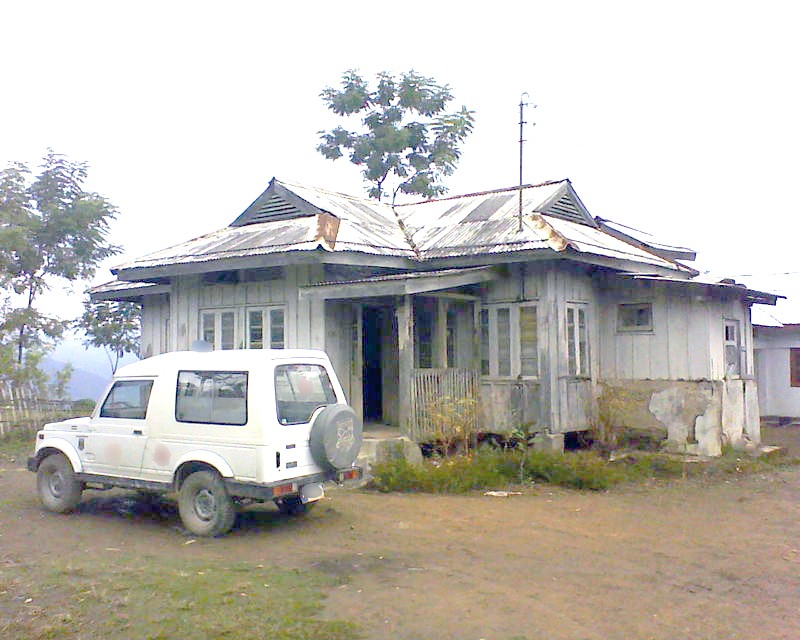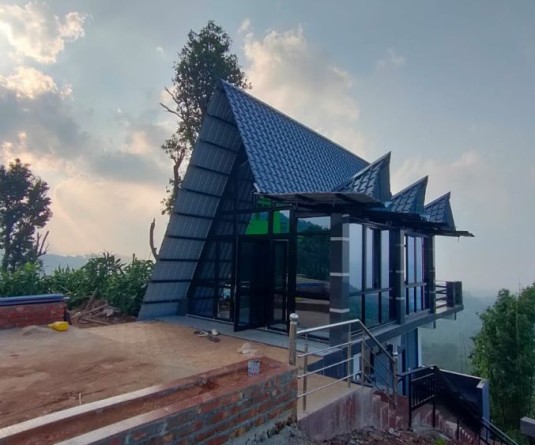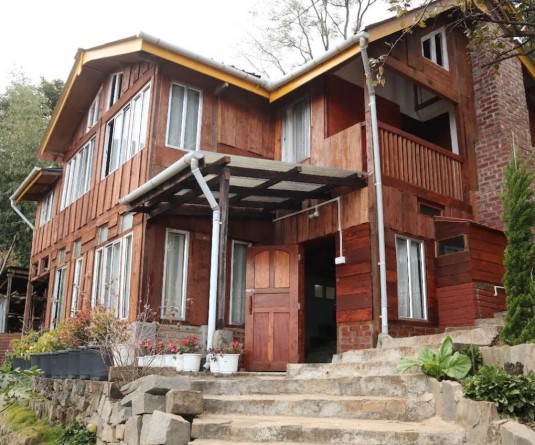Seen in the photograph is a decades’ old, barely-standing, washed-out government quarter, in shambles in Tobu town under Mon district. (Morung photo)

Y. Merina Chishi
Dimapur | June 7
The Dikhu Bridge on NH 155, which collapsed on April this year, was a crucial example of Nagaland’s crumbling public infrastructure. The Nagaland Public Works Department said the bridge did not collapse due to negligence. But the bridge’s condition had been deteriorating for the past three years and simply needed more attention.
Public infrastructure in Nagaland is in shambles. Education, healthcare, power, roads and bridges; government infrastructure is collapsing. The picture is dismal especially in the rural areas. In a travesty of state-planning to ensure balanced growth within Nagaland, there is now glaring disparity between the urban and the rural sector. The far-flung districts tell the story of neglect. Many regions in these districts are still surviving with pre-British infrastructure. School buildings, government quarters and offices built in the 60’s have seen only minor repairs, or none at all, till date. Some buildings are in a state beyond repair.
Priority sectors in need of intervention are schools, healthcare centres and government offices. Leaking roofs, broken doors and windows is a common sight in almost all government buildings. Many government offices are abandoned and left in ruins; some have become homes for cattle. Due to negligence and no proper funds for maintenance, most public properties have also been encroached upon.
Power infrastructure in the state is also in ruins. Electricity poles and dysfunctional transformers is a dent on the already crumbling infrastructure. The government has not replaced electricity poles in almost 40 years despite repeated appeals by the department. Most villagers are still without regular electricity supply.
Government sources say that most of the public infrastructures are beyond repair. It is estimated by engineers and contractors that crores of rupees would be needed to upgrade Nagaland’s creaking system. The government would also need to construct detailed structural audits for old government property in need of repair. But government sources say it would be wiser to replace the old infrastructures with new ones.
It is not just broken buildings but the list of roads in need of repair is extensive. In some ways it is expected, as much of the physical infrastructures built are low-grade. Nagaland PWD norms require all weather roads must have a life design of 15 years. However, the lifespan of roads in the state is well-known. The standard norm prescribed for state roads is 40 mm thickness but the quality is always compromised. The roads are hardly 15 mm thick. In the past few years, the government has built palatial offices and bungalows for officers but nothing has been done to improve the depleting road conditions. Much of the money sanctioned for infrastructural development has been used in piece-meal projects. Nagaland has seen no sustainable infrastructure till date.






